Rise of Automotive Hacking: Modern Vehicles with Automated Software Are Becoming More Vulnerable to Hacking
Rise of Automotive Hacking
The world of automotive technology has advanced rapidly in recent years, with cars now driving themselves, utilizing automated software to control their operation. However, this increased reliance on technology has ushered in a new age of vulnerability, with the rise of automotive hacking now a reality. The potential for hackers to exploit the automated software used by modern vehicles has seen a sharp increase, and requires careful consideration and prevention.
Automotive hacking can take various forms, from maliciously manipulating a vehicle’s software to gain control, to hijacking connected systems such as navigation and infotainment. This can lead to serious security and safety issues, as well as a breach of privacy. As such, it is essential that automotive manufacturers and government regulators take appropriate action to ensure the security of connected vehicles and the safety of their drivers.
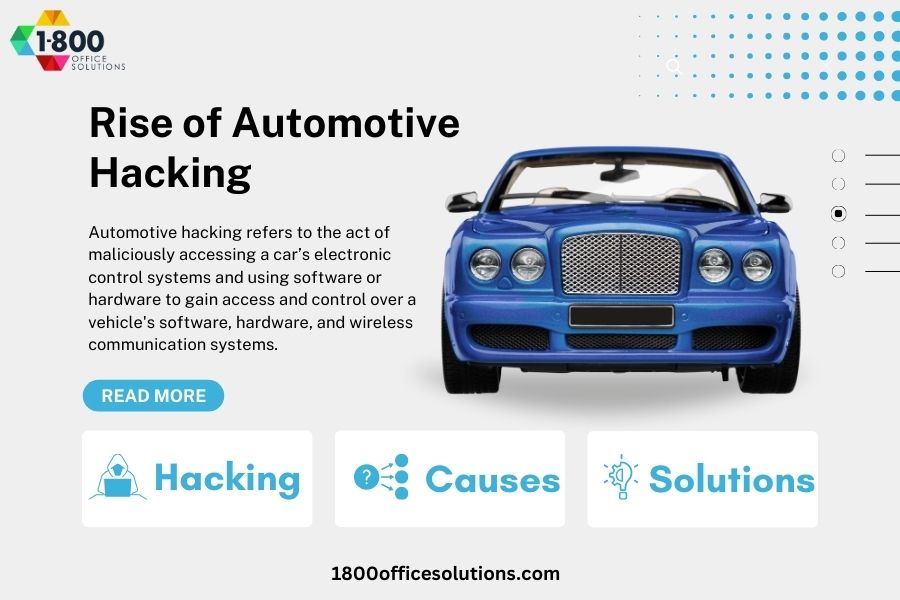
What Is Automotive Hacking?
Automotive hacking refers to the activity of gaining unauthorized access to a car’s computer system, gaining control of the car’s functions and/or data, and exploiting the car’s systems. The rise of automotive hacking has caused increasing concern among car manufacturers, the automotive industry, and automotive cybersecurity experts.
Hackers are exploiting vulnerabilities in the car’s communication systems, computer system, and electronic control systems to gain access to data, such as credit card information, and gain control of the car’s functions, like alarm systems, air conditioning or heating.
Definition of Automotive Hacking
As the rise in automotive hacking continues to threaten the automotive industry, it is important to understand what it is and how it works. Automotive hacking refers to the act of maliciously accessing a car’s electronic control systems and using software or hardware to gain access and control over a vehicle’s software, hardware, and wireless communication systems. It involves accessing the car’s computer system, which gives hackers the ability to control various aspects of the vehicle, such as the car doors and ignition, air conditioning or heating system, alarm system and the oil change system.
Hackers can exploit vulnerabilities in a car’s system, such as the entry point for hackers, the countless lines of code, and the communication systems connected to the internet. With access to the car’s system, hackers can take full control of the car, causing it to either accelerate quickly, disable the brakes, or even entirely destroy a vehicle’s security measures. With modern cars that have connected automotive apps, hackers can exploit the GPS location system by using radio transmission to track the vehicle’s location.
The rise of automotive hacking has seen a dramatic increase in the risk of data breaches, as hackers can gain access to personal information, such as credit card information, stored in the car’s computer system.
Common Types of Automotive Hacking
With the rise in automotive hacking, the entire automotive industry is now vulnerable to cyber-attacks. Automotive hacking refers to any malicious activity targeting the electronic and computer systems of automobiles. Automotive hackers use a variety of techniques to gain access to cars, ranging from exploiting security vulnerabilities in communication systems to breaking into key fobs.
Hackers can exploit vehicle systems, such as the air conditioning or heating system, or gain access to personal information stored in the car’s computer system. They can even steal credit card information or maliciously damage the car’s electronic control system with malicious code and data packets.
As the sophistication of automotive hacking has increased, the incidence of automotive hacks has also risen. According to industry experts, the rate of hacks has increased by about 225 percent since 2023. This has led to automotive manufacturers and car companies investing in the latest cyber security measures to protect their cars from external attacks. To protect their vehicles, car manufacturers have implemented perimeter security and intrusion detection systems, which can detect and alert drivers to any potential hacking attempts.
Modern cars are also equipped with features that hackers can exploit, such as connected automotive apps, data ports and infotainment systems. The infotainment systems are standard amenities in many cars manufactured after 2005 and are a potential entry point for hackers.
The Increasing Sophistication of Automotive Hacking
The increasing sophistication of automotive hacking is a pressing concern for all those involved in the automotive industry. By 2023, the rise of automotive hacking will have made it necessary for car manufacturers to take drastic measures to ensure the security of their vehicles. Hackers are constantly finding new ways to breach the security of cars and maliciously gain access to the data stored in the car’s computer system. Cyber criminals are becoming more sophisticated in their techniques, making it easier for them to find entry points for hackers to take full control of a vehicle’s systems, software, and even the car doors and ignition.
Hackers can exploit a car’s system to gain access to personal credit card information, as well as manipulate the air conditioning or heating system, alarm system, and even the oil change indicator. Furthermore, with the rise in automotive hacking, hackers can gain access to connected automotive apps, which are becoming standard amenities in modern cars. Cyber attackers can also exploit the car’s computer system to access the car’s GPS location system by using radio transmission or access the car’s software to make fraudulent purchases.
Fortunately, the automotive industry is making sure its vehicles are more secure by reporting security vulnerabilities, phasing out insecure communication systems, and introducing perimeter security and intrusion detection systems in cars manufactured after 2005.
What Are the Risks of Automotive Hacking?
The rise of automotive hacking has been a growing concern in the automotive industry, as hackers are able to gain access to cars and vehicles with malicious code and data packets. Cybersecurity vulnerability poses severe threats to modern cars, as hackers can exploit the vehicle’s software and communication systems, potentially accessing key fob information, credit card data, and other personal information.
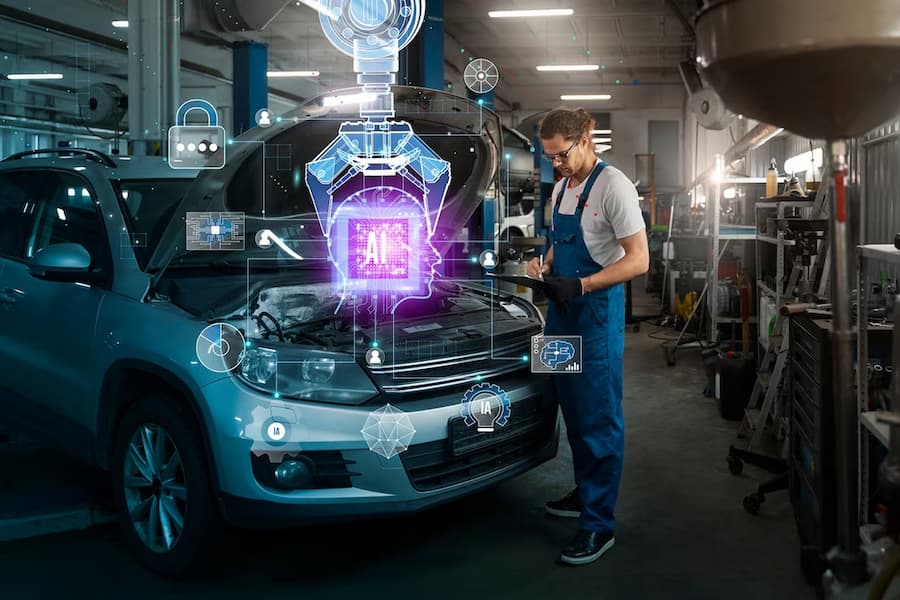
Even worse, hackers can take full control of the vehicle’s security measures, like the alarm system and the oil change, and can even damage the car’s computer system.
Car companies are now introducing security measures to prevent hackers from attacking the internal software of the vehicle.
Potential Data Breaches
The rise of automotive hacking has drastically changed the dynamics of the modern automotive industry with even more of an emphasis placed on its cybersecurity. With the advent of cars that are now connected to the internet, hackers have a new way to gain access to cars and exploit their vulnerabilities. A potential data breach caused by malicious hackers may be one of the most concerning risks of automotive hacking, as it can result in the theft of personal information, such as credit card information, from a vehicle.
The introduction of connected automotive apps has created an entry point for hackers to exploit, as they may be able to gain access to the car’s computer system. This system is comprised of countless lines of code, and hackers can use this code to control a car’s systems. This includes the air conditioning or heating system, the alarm system, and the oil change system. They can even open car doors and the ignition, as well as gain access to the infotainment systems, which are standard amenities in modern cars.
Additionally, hackers may be able to access a vehicle’s GPS location system by using radio transmission. This could be used to track a vehicle’s movements and allow hackers to steal personal data. To combat this, car companies are increasing the security measures they are taking to protect their vehicles from external attacks.
Cyberthreats to Vehicle Safety
Having explored the concept of automotive hacking, it’s time to consider the risks associated with it. Cyberthreats to vehicle safety are a major concern in the automotive industry due to the potential for malicious hackers to gain access to a vehicle’s self-driving, security, and communication systems.
As more cars are connected to the internet, the entry point for hackers to exploit vehicle systems becomes greater. With lines of code running into the millions, hackers can take full control of a vehicle’s software, unlocking car doors, igniting the engine, and even tampering with the vehicle’s air conditioning or heating system. Cyber criminals can even use software to extract personal credit card information, GPS location data, and other sensitive information stored in the car’s computer system.
These vulnerabilities have caused a rise in automotive hacking incidents. According to industry experts, the incidence of automotive hacks increased by about 225 percent between 2019 and 2023. To protect cars from external attacks, car companies have implemented perimeter security and intrusion detection systems, as well as secure telematics systems. However, car manufactured after 2005 are particularly vulnerable as they lack these security measures.
The rise of automotive hacking has led to increased awareness of the importance of automotive cybersecurity.
Compromised Vehicle Performance
The potential of compromised vehicle performance is a major risk of automotive hacking. With the rise of automotive hacking in the automotive industry, the risk of cyber threats to the safety of vehicles has been further increased. With the advancements in technology, modern cars come with numerous online features that are connected to the internet, making them vulnerable to malicious hackers.
By gaining access to a vehicle’s key fob, hackers may gain access to the car’s computer system, enabling them to alter and control the vehicle’s software. This can include controlling the air conditioning or heating system, the alarm system, and the oil change. Hackers can even gain access to the car doors and ignition to start the vehicle.
Today, the incidence of automotive hacks has increased by about 225% in the past few years, due to the proliferation of digital devices in cars, such as infotainment systems, GPS location systems, and wireless communication systems. Cyber criminals can exploit the vulnerabilities in these systems to obtain personal credit card information, or gain access to the car’s computer system to take full control of the vehicle.
To prevent hackers from attacking the internal software, car companies must ensure that the software used in their vehicles has been approved and combined with other security measures, such as perimeter security and intrusion detection.
How Can Automakers Protect Against Automotive Hacking?
The rise of automotive hacking has become a major concern for car manufacturers and the automotive industry. Automotive hackers use malicious code and data packets to gain access to key fob, credit card information, electronic control systems, communication systems, and computer systems of the car.
As the vulnerabilities of modern cars become more exposed, the risk of a data breach increases. Hackers may be able to access the car’s system and take control of the air conditioning or heating system, alarm system, oil change, car doors, and ignition.
Enhancing Data Security Measures
The rise in automotive hacking has been a growing cause for alarm in the automotive industry, prompting car manufacturers and cybersecurity experts to take proactive measures in order to protect against malicious activities. Enhancing data security measures is one of the ways automakers can protect against automotive hacking, as well as updating software regularly and employing automated monitoring systems.

One of the main security measures that can be taken in order to protect against automotive hacking is to use encryption technology. By encrypting data sent and received between the car and the manufacturer, hackers may be unable to access or alter this data.
Additionally, the encryption technology should be updated regularly to ensure that the car remains secure from the latest cyber threats. Furthermore, car manufacturers should use secure telematics systems in order to protect against hacking. These systems are designed to prevent hackers from accessing the car’s internal systems by using radio transmission signals.
Modern cars are equipped with electronic control units that act as entry points for hackers. Therefore, car manufacturers should make sure their vehicles have up-to-date software that has been approved by the car company. This software should be combined with other security measures, such as perimeter security and intrusion detection systems, in order to protect cars from external attacks.
Updating Software Regularly
The level of automotive hacking is on the rise, and car manufacturers are taking notice. To protect against malicious hackers, it is important to update a vehicle’s software regularly. Automotive cybersecurity experts recommend that car companies use the latest software patches for their vehicles, and establish a process for regularly updating the software. This way, car manufacturers can stay ahead of any potential malicious activity.
Modern cars have countless lines of code that can be vulnerable to hackers. Updating the software on a car’s computer system gives car companies a better chance of preventing these malicious code and data packets from entering the vehicle. If cars are not updated with the latest security patches, hackers can exploit a weakness in the system and gain access to the car’s computer system.
Car companies should also make sure their vehicle’s software is approved by a third-party security expert. This is important because it ensures that the car’s security measures are up-to-date with the latest cyber threats. Additionally, car companies should also consider implementing perimeter security and intrusion detection systems to protect their cars from external attacks.
The future of the automotive industry is inextricably linked to the rise of automotive hacking. Car companies need to stay vigilant in updating their software regularly to protect against malicious hackers.
Employing Automated Monitoring Systems
The rise in automotive hacking has highlighted the need for car manufacturers to take proactive measures to protect their vehicles and their customers. One method of protection is by employing automated monitoring systems. Automated monitoring systems in cars detect malicious code and data packets that are designed to compromise cybersecurity and gain access to key fob information, credit card information, and other sensitive data.
Automated monitoring systems will alert car manufacturers when malicious code is detected. This will enable car companies to take protective action to prevent hackers from attacking the internal engine control and electronics systems of the car.
Furthermore, the latest cyber security systems can be used to detect when a car’s software has been tampered with or reversed engineered. Automated monitoring systems are also able to detect when the car has connected automotive apps or when the car has been connected to the internet.
Car companies can use automated monitoring systems to ensure that the car’s system is secure, and to make sure that the car’s software has been approved and tested. Automated monitoring systems can also alert manufacturers when there is an entry point for hackers to exploit and take full control of the car, such as through the car’s infotainment system, security system, and even the air conditioning or heating system.
What Can Consumers Do to Protect Against Automotive Hacking?
The rise of automotive hacking has presented a new set of challenges for the automotive industry and the consumers. Automotive hacking refers to the unauthorized access of a car’s computer system and its various components, such as the alarm system, the oil change system, the car doors, and the ignition. As cars become increasingly connected via wireless and other cyber communication systems, hackers can gain access and maliciously manipulate the data stored on the vehicle’s software – potentially leading to a data breach.
Car manufacturers have taken proactive measures to reduce the risk of automotive hacking by introducing a secure telematics system.
Regularly Updating Vehicle Software
As the rise of automotive hacking continues to dominate headlines, consumers must be aware of the best way to protect their vehicles from malicious attacks. One of the key measures to protect against automotive hacking is to regularly update the vehicle’s software. Modern cars are connected to the internet, and car companies are constantly pushing out new software updates to fix security vulnerabilities and patch any malicious code. Car companies will typically send out notifications to drivers to let them know when a new update is available and should be installed.
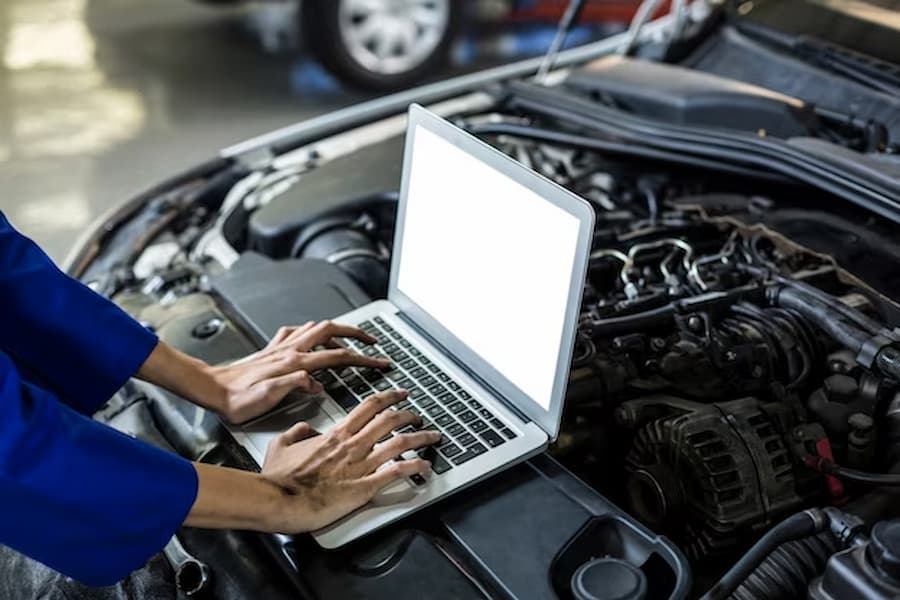
It is important to note that not all software updates are created equal, and they can vary from car to car. Some may include a new feature or bug fix, while others may do nothing at all. However, car companies usually recommend that drivers install the latest software as soon as it is available. In order to ensure the car is running the most up-to-date software, it is recommended that drivers check the car’s computer system regularly.
If a driver does not have the latest software installed, they may be vulnerable to a data breach. This is why drivers should make sure their vehicle’s software is always up-to-date. Car companies are also using secure telematics systems to prevent hackers from attacking the internal systems of cars.
Being Aware of Potential Cyberthreats
As the rise of automotive hacking continues to grow throughout the automotive industry, consumers must be aware of the potential cyberthreats posed by hackers. Automotive hackers may use malicious code and data packets to gain access to a car’s computer system, which can enable them to access credit card information, electronic control systems, and other communication systems. This can even lead to a data breach or malicious intent, such as unlocking a car door or controlling the air conditioning or heating system.
Additionally, modern cars connected to the internet can be an entry point for hackers to take full control of the vehicle’s software. As the number of lines of code involved in a car’s computer system increases, so do the potential vulnerabilities. Hackers can exploit these vulnerabilities to gain access to the car’s system, allowing them to entirely destroy a vehicle’s security measures.
To protect against automotive hacking, consumers must make sure their vehicle’s software is regularly updated. Car companies are constantly issuing security updates and patches to their software to prevent hackers from attacking the internal systems. Additionally, any car manufactured after 2005 should have secure telematics systems installed, which can help protect the car from external attacks.
Utilizing Third-Party Security Solutions
It is clear that the rise in automotive hacking poses a serious threat to the future of the automotive industry, and car companies must take extra measures to protect their vehicles from malicious attacks. While automakers should make sure their vehicles are equipped with the latest cyber security measures, consumers should also take steps to protect their vehicles. One way to do this is by utilizing third-party security solutions.
These solutions can range from USB anti-data hacking charging adaptors, which are designed to prevent hackers from accessing the car’s computer system, to perimeter security and intrusion detection systems which protect cars from external attacks. Many of these systems use a signal used by a car such as a key fob or a data port to detect any malicious code and data packets that may be trying to gain access to the vehicle’s systems.
In addition to utilizing these third-party security systems, car owners should also make sure their vehicle’s software is up to date, as hackers can exploit any outdated software, especially in cars that have connected automotive apps or infotainment systems. It’s also important to be aware of potential cyber threats, such as those that may arise when renting a car or connecting a vehicle to the internet.
What Are the Regulatory Standards for Automotive Hacking?
The rise of automotive hacking has become a major concern for the automotive industry and cybersecurity experts. Automotive hacking is a malicious attack on a car where a hacker or a group of hackers use software to gain access to the car’s computer system by exploiting vehicle systems, communication systems, and connected automotive apps.

As a result, hackers may be able to obtain personal credit card information, make the car doors unlock, or even take full control of the vehicle’s software and engine control and electronics systems.
Automotive Industry Regulatory Standards
The rise of automotive hacking has created a need for increased regulation of the automotive industry. Automotive industry regulatory standards are a set of laws and policies designed to protect vehicles and their systems from malicious hackers and to ensure that cars have high levels of cyber security. These standards are set by governments, international organizations, and car manufacturers to make sure cars are secure and protect consumers from data breaches and other malicious activity.
For example, in 2023, the European Union will require all cars manufactured after 2005 to meet certain security measures. This includes stringent requirements for perimeter security and intrusion detection, and for vehicles to have secure telematics systems. They also require cars to have anti-data hacking USB charging adaptors, and for car companies to report any security vulnerabilities they find.
In addition, car manufacturers are working to make sure their cars have up-to-date security measures. This includes making sure modern cars have connected automotive apps and infotainment systems that are secure, and that the car has the latest cyber security measures in place. Some car companies are also working to prevent hackers from attacking the internal engine control and electronics systems by using the radio signal used by a car.
Government Laws and Policies
As the rise of automotive hacking and associated cyber threats continues to rise, a number of government laws and policies are being implemented to protect against malicious hackers and cyber criminals. In 2023, the United States government mandated that all car manufacturers must adhere to strict security measures that are designed to protect a vehicle’s software from malicious code and data packets. This will help to prevent hackers from gaining access to a car’s computer system and electronic control units, which could potentially lead to a full data breach and the theft of a driver’s personal and credit card information.
Government regulations have also been implemented to ensure that any car manufactured after 2005 has a secure telematics system that is combined with other security measures such as perimeter security and intrusion detection. This helps to protect cars from external attacks that could otherwise be used to gain access to a vehicle’s systems, such as the alarm system and the oil change notification.
By using radio transmissions to hack into a car’s GPS location system, hackers can exploit this system to obtain personal and private information and use software to gain access to car doors and ignition systems. This could lead to a hacker taking full control of a car’s system, allowing them to either accelerate quickly or entirely destroy a vehicle’s security measures.
International Automotive Security Standards
With the rise in automotive hacking, the need for international automotive security standards has become increasingly important. To protect against malicious attacks, the automotive industry must develop and implement comprehensive cybersecurity measures and protocols. Car manufacturers must create and execute security protocols that not only guard against hackers, but also protect against data breaches, stolen credit card information, and other cyber threats. Security measures must also be implemented to protect self-driving cars and connected automotive apps from cybercriminals.
Automotive hackers can exploit the communication systems, computer systems, and data ports of vehicles connected to the internet. As a result, carmakers must make sure their vehicle’s security systems are up to date and provide regular updates to their key fob and computer systems. Furthermore, car companies must also ensure that their cars are equipped with the latest cybersecurity measures, such as a USB anti-data hacking charging adaptor and a secure telematics system.
In addition, the automotive industry should take steps to prevent hackers from attacking the internal systems of cars manufactured after 2005. This includes the installation of perimeter security and intrusion detection systems, as well as protecting the engine control and electronics systems from external attacks. By establishing global automotive security standards, the industry can ensure that cars are better protected against malicious hacks.
What Is the Impact of Automotive Hacking?
The rise of automotive hacking has been a major source of concern for the automotive industry, as hackers may gain access to personal data, credit card information, and electronic control systems. Cybersecurity measures implemented by car manufacturers in 2024 will be essential for protecting vehicles from malicious code and data packets.
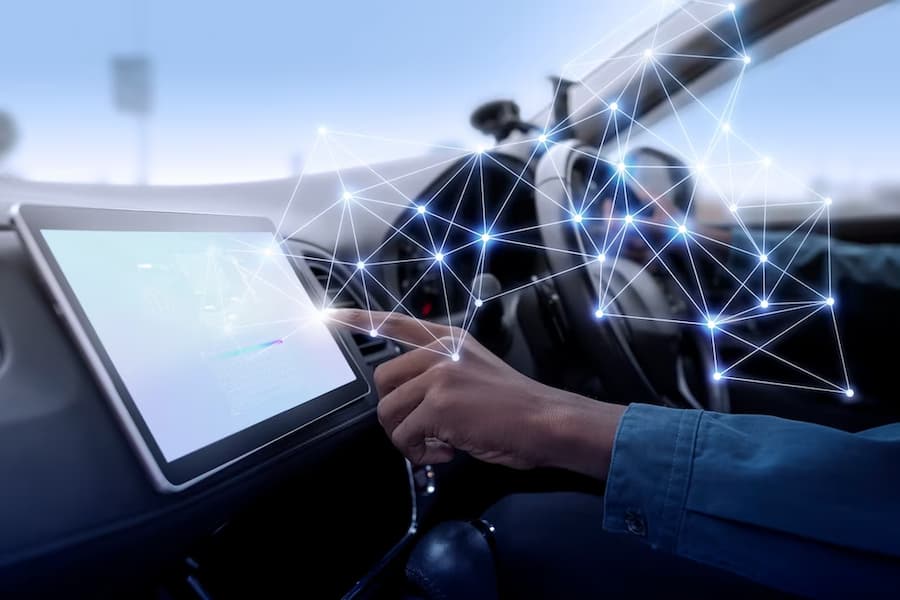
Connected automotive apps, infotainment systems, and driverless cars are all vulnerable to cyber attackers. The incidence of automotive hacks has increased by about 225%, making it necessary to ensure that cars have secure telematics systems, perimeter security, and intrusion detection.
Impact on Automotive Safety
As the rise of automotive hacking increases, the impact on automotive safety is a major concern. Automotive hacking is when a hacker or malicious actor uses a combination of software, hardware, and networks to gain access to a vehicle’s system. Through this process, a hacker or malicious actor can take full control of a vehicle’s functions, such as the car doors, the ignition, the air conditioning or heating system, and the oil change. Hackers can also exploit a car’s computer system to obtain credit card information or personal data.
In recent years, cyber criminals have found entry points for hacking cars manufactured after 2005. As technology advances and cars become increasingly connected to the internet, the risk of malicious code and data packets infiltrating a car’s system increases.
Due to the vulnerability of connected automotive apps, cyber attackers can access a vehicle’s software and gain control of communication systems, such as the GPS location system by using radio transmission. This is a major concern as hackers can exploit the car’s system to entirely destroy a vehicle’s security measures, allowing them to open car doors and gain access to the car’s computer system.
Impact on Privacy and Security
The rise of automotive hacking presents a significant threat to the privacy and security of drivers and their vehicles. By exploiting a car’s computer system, hackers can gain access to a host of sensitive data, from a vehicle’s GPS location system to credit card information stored in the infotainment system. Any motorist who has ever connected their car to the internet is at risk from a malicious hacker. Automotive cyber-attacks are on the rise, and without proper security measures in place, malicious actors can wreak havoc on cars, from unlocking car doors to taking full control of the vehicle’s systems.
Modern cars are filled with countless lines of code and connected to the internet, providing an entry point for hackers. This makes them vulnerable to cyber-attacks, as hackers can use software to manipulate a car’s engine control and electronics systems. The communication systems, such as air conditioning or heating systems, can also be infiltrated, allowing hackers to inject malicious code and data packets into the car’s system.
Car companies, as well as the entire automotive industry, must work to counter the cyber threats posed by hackers. Measures such as a secure telematics system and perimeter security and intrusion detection must be taken to protect cars from external attacks.
Impact on the Automotive Industry
The impact of automotive hacking on the automotive industry is immense. As the rise of automotive hacking continues, car manufacturers must invest in more stringent security measures and cybersecurity protocols to keep their vehicles safe. Without the proper protection, hackers may be able to gain access to a car’s system, which could lead to a data breach, compromising personal information such as credit card numbers or other sensitive data.
Moreover, an upsurge in malicious code and data packets has resulted in an increased vulnerability to cyber attacks. As connected automotive technology continues to become more prevalent, the potential for hackers to exploit the vehicle systems, communication systems, and computer system for malicious activities presents an ever-present risk. Car manufacturers must develop secure telematics systems that encrypt all data and prevent hackers from attacking the internal systems of a car.
Additionally, the prevalence of self-driving cars will further increase the risk of automotive hacking. The sheer amount of lines of code, sensors, and communication systems needed to make an autonomous vehicle operate requires automakers to invest in strong cybersecurity measures. Unfortunately, some car companies are not taking the necessary steps to ensure their vehicles are secure from cyber criminals.
Finally, car owners must also take responsibility for their vehicle’s security.
What Are the Challenges of Automotive Hacking?
The rise of automotive hacking has become a major concern for the automotive industry, as hackers can exploit the vulnerabilities in modern cars. Hackers can use software to gain access to car doors, alarm systems, oil changes, and ignition systems.
The threat is even greater with connected automotive apps, as hackers can exploit the data ports and infotainment systems, which are standard amenities for cars manufactured after 2005. Cyber attackers can even access the car’s GPS location system by using radio transmission, making it an open invitation for hackers to take full control of the vehicle.
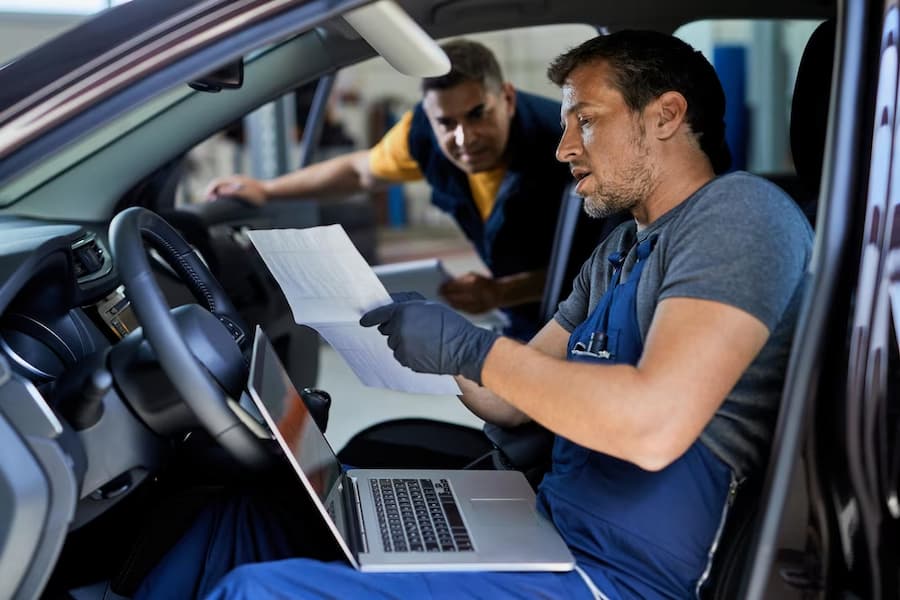
Keeping Pace with Cyberattackers
The ever-evolving nature of cyberattacks has created a new challenge for the automotive industry — keeping pace with cyberattackers. With hackers continually discovering new techniques to exploit vulnerabilities, the industry must stay one step ahead of them to protect vehicles and their owners from potential harm. To do this, car manufacturers must stay informed of the latest cyber threats, develop and implement robust security measures, and regularly update their vehicles with new software to ensure compliance with regulations.
Modern cars are deeply connected to the internet, making them vulnerable to malicious attacks. Hackers can use software to gain access to a vehicle’s systems, such as the key fob, alarm system, and oil change notification. They can also exploit the car’s computer system to obtain personal information, such as credit card information, or even take full control of the vehicle to either accelerate quickly or entirely destroy a vehicle’s security measures.
It is not enough to simply have an up-to-date software; car companies must make sure their vehicles’ software is secure. This includes taking proactive steps to prevent hackers from attacking the internal components of a vehicle, such as the air conditioning or heating system. Additionally, car companies must ensure their vehicles’ software complies with global automotive regulations and industry standards.
Addressing Software Flaws
The impact of automotive hacking is immense, and it is essential to address software flaws in order to keep pace with the cyberattackers. In the modern car, countless lines of code make up the vehicle’s software, and hackers can exploit this system to obtain personal credit card information or even gain access to the car’s computer system. Car companies must make sure their vehicle’s software is secure and up to date, as well as ensure compliance with the latest cyber security regulations.
The automotive industry is continuously evolving, making it difficult for car manufacturers to keep track of software vulnerabilities. As hackers become more sophisticated, they can use software to access the car’s computer system, car doors and ignition, or even the air conditioning or heating system. The car’s computer system gives hackers a potential entry point for malicious code and data packets, which could entirely destroy a vehicle’s security measures.
In order to protect vehicles from external attacks, car companies must implement perimeter security and intrusion detection systems. Cyber security experts also suggest car owners use a USB anti-data hacking charging adaptor, which prevents cyber criminals from accessing the car’s data ports and infotainment systems. Infotainment systems are now standard amenities in cars manufactured after 2005, making them an open invitation for hackers to take full control of the vehicle.
Ensuring Compliance with Regulations
As the rise in automotive hacking continues to present a threat to the automotive industry, it is essential that car manufacturers ensure they comply with all regulations. Automotive cybersecurity is a key component in the development of modern car technology and it is crucial for car companies to take the necessary steps to protect their vehicles.
The implementation of stringent security measures must be a top priority for car companies, as there have been many instances of cyber criminals exploiting the vulnerability of car systems for personal gain. For example, hackers may be able to gain access to personal credit card information, or use software to take full control of a vehicle’s electronic control systems.
Car companies must make sure their vehicles are secure from malicious code and data packets that can be sent via wireless or other cyber communication systems. They must also ensure that their vehicles are not vulnerable to entry points for hackers. This means making sure that any new software that is added to a car’s computer system gives the car’s system the necessary security measures to protect it from cyber attackers.
The use of secure telematics systems and other perimeter security measures, such as intrusion detection, is also important to keep cars from external attacks.
What Technologies Are Being Used to Combat Automotive Hacking?
The rise of automotive hacking has been a major concern for the automotive industry. Automotive hackers can exploit vulnerabilities in communication systems, computer systems, and electronic control systems to gain access to key fob data, credit card information, and even cause a data breach.
Car manufacturers must take necessary security measures to prevent malicious hackers from taking control of automobile systems. From air conditioning and heating systems to car doors and ignition, hackers can gain access to a vehicle’s system and entirely destroy its security measures. It is important for car companies to make sure their vehicle’s software is up-to-date and any data ports and infotainment systems are securely locked.
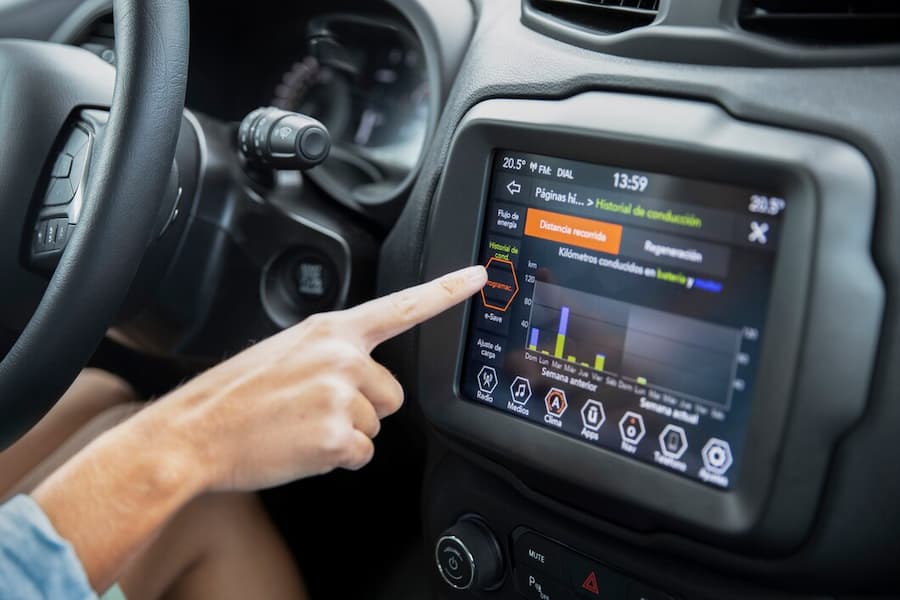
Automotive Cybersecurity Solutions
To combat the rise in automotive hacking, the automotive industry has developed a number of automotive cybersecurity solutions. Automotive cybersecurity is a fast-growing field that works to protect the modern car from malicious code and data packets sent by hackers. In order to do this, car companies are now using secure telematics systems and perimeter security and intrusion detection systems to prevent hackers from attacking the internal systems of the vehicle.
These systems are combined with other security measures, such as a car manufactured after 2005 that can detect a key fob, and a USB anti-data hacking charging adaptor to make sure that hackers can not gain access to the car’s system or the personal data of its occupants. Additionally, car companies are now using secure communication systems, data ports, and infotainment systems, as these are all potential entry points for hackers to exploit.
Industry experts argue that the future of the automotive industry is in automated detection and response systems. With the increase in connected automotive apps and self-driving cars, these systems will monitor for any malicious code or data packets sent by hackers and take action to prevent a data breach. They will also make sure that the car’s computer system gives off an alarm system and the oil change schedule that can alert the driver.
Automated Detection and Response Systems
The rise in automotive hacking has made it increasingly important for the automotive industry to develop security measures that can effectively protect cars from malicious attacks. Automated Detection and Response Systems (ADRS) have become a key component in maintaining the security of the modern car and protecting drivers from cyber criminals.
ADRS are computer systems that constantly scan for vulnerabilities and malicious code in the car’s electronic control systems, communication systems, and data ports. If any suspicious activity is detected, the ADRS will take action to stop the attack and alert the car manufacturer. This allows car companies to take the necessary steps to protect their customers from a data breach or any other malicious activity.
The ADRS can also detect attempts by hackers to gain access to the car’s computer system. By using software and tools, hackers may be able to gain access to the car’s system and take control of features such as the air conditioning or heating system, car doors, and ignition. With ADRS, car companies can detect these activities and prevent hackers from attacking the internal systems of the car.
Furthermore, car companies can use ADRS to make sure their vehicles are using the latest cyber security measures.
Automotive Data Security Solutions
Now that we have established the challenges of automotive hacking, the next logical step is to understand the technologies and security measures being used to combat it. Automotive data security solutions are becoming increasingly important in the automotive industry, as more and more vehicles are connected to the internet and vulnerable to malicious hackers.
A key component of automotive cybersecurity solutions is an automated detection and response system, which is designed to detect any attempts to gain unauthorized access to a car’s computer system. This system also helps to detect any malicious code and data packets that might be sent to a car’s system. Additionally, car companies are installing security measures such as a secure telematics system that can detect any hacking attempts, as well as providing timely updates to the car’s software.
Modern cars are also becoming more and more secure, with car companies using encryption to make it harder for hackers to gain access to the car’s system. Encryption is also used to protect the driver’s credit card information, which is stored in the car’s on-board computer system. Additionally, car companies are using software to make sure their vehicles are secure from malicious code and data packets.
Are Automakers Doing Enough to Combat Automotive Hacking?
The rise of automotive hacking has been a cause of concern for the automotive industry, setting off alarms amongst automakers and consumers alike. Automotive hackers have the potential to gain access to data, including credit card information, as well as manipulate the vehicle’s electronic control systems, such as air conditioning or heating system, and even completely destroy a vehicle’s security measures.
Car companies are taking measures to make sure their vehicles are protected from malicious code and data packets, and are taking steps to secure their telematics systems, communication systems, and computer systems.
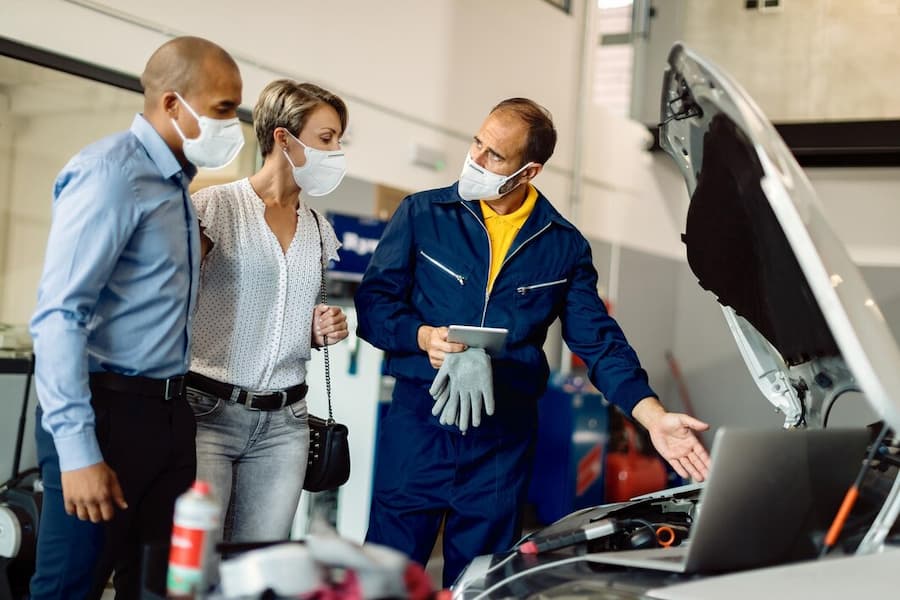
Automakers’ Responsibilities
The rise of automotive hacking has made it clear that automaker’s are faced with the responsibility of safeguarding their customers’ vehicles. As the industry continues to evolve, car manufacturers must take extra precautions to ensure that the technology that powers their vehicles is not vulnerable to cyberattacks. As hackers become more sophisticated and the industry relies more heavily on technology, automakers must stay one step ahead in order to protect their customers.
The automotive industry has been quick to respond to the rise in automotive hacking, implementing a variety of security measures to protect their vehicles. Car manufacturers have designed cars to be equipped with cybersecurity measures that protect against malicious actors. Automakers are also focusing on developing communication systems and computer systems that are both secure and resistant to cyber threats. Additionally, automakers have already taken steps to protect self-driving cars from malicious code and data packets.
Furthermore, automakers have started producing cars that are connected to the internet, which can increase the risk of a data breach or a key fob hack. To protect the connected automotive, car companies are including USB anti-data hacking charging adaptors and perimeter security and intrusion detection systems. Automakers are also beginning to offer software updates to their cars, which can be used to patch vulnerabilities and protect the car from cyber criminals.
Automakers’ Efforts to Combat Automotive Hacking
With the rapid rise of automotive hacking, automakers have become increasingly aware of the need to protect their vehicle systems from malicious cyber attacks. Automakers have responded to this challenge by implementing a range of security measures, from developing stronger encryption for car keys and key fobs to employing advanced cryptographic techniques to secure connected automotive systems.
Car manufacturers have also taken steps to ensure that their vehicles are not vulnerable to unauthorized access. For instance, they have implemented software that is designed to detect any malicious code that may be present in a vehicle’s computer system and prevent hackers from gaining access. Additionally, automakers have implemented measures to protect data ports and infotainment systems from data breaches.
Automakers have also taken steps to ensure that their vehicles are not vulnerable to malicious attacks. For instance, they have implemented security measures such as perimeter security, intrusion detection, and secure telematics systems. Additionally, car companies have implemented measures to protect drivers from cyber threats, such as by installing USB anti-data hacking charging adaptors in modern cars.
Furthermore, automakers have taken steps to ensure that their vehicles are not vulnerable to malicious attacks. For example, they have implemented software that is designed to detect and stop hackers from accessing the car’s computer system.
Consumer Expectations of Automakers
As the rise of automotive hacking continues to be a growing concern and the automotive industry scrambles to keep up, consumers are left to wonder if automakers are doing enough to protect them. Automakers have a responsibility to their customers to ensure that their vehicles are safe and secure from malicious attacks. To that end, automakers have implemented a number of security measures to protect vehicles from cyber threats. However, given the complexity of the modern automobile and the fact that hackers can exploit the car’s computer system, the question remains whether automakers are doing enough to protect their customers.
The automotive industry has taken steps to strengthen its cybersecurity framework, such as implementing encrypted communication systems, using secure telematics systems, and installing perimeter security and intrusion detection systems in cars manufactured after 2005. However, these efforts are often not enough to prevent hackers from attacking the internal software of cars. Additionally, many cars come with standard amenities such as data ports and infotainment systems, which can be a potential entry point for hackers.
In light of the increasing number of automotive hacking incidents, consumers expect automakers to take proactive steps to protect their vehicles from malicious attacks. They want automakers to use the latest cyber security tools and technologies to ensure that their cars are secure and safe from hackers.
What Is the Future of Automotive Hacking?
The rise of automotive hacking has posed a serious threat to the automotive industry. Automotive hacking is when hackers gain access to a car’s system and use software and malicious code to exploit vulnerabilities and disrupt the car’s functioning. Malicious code and data packets can be used to gain access to credit card information and electronic control systems, making it difficult to protect automobiles from cyber-attacks.
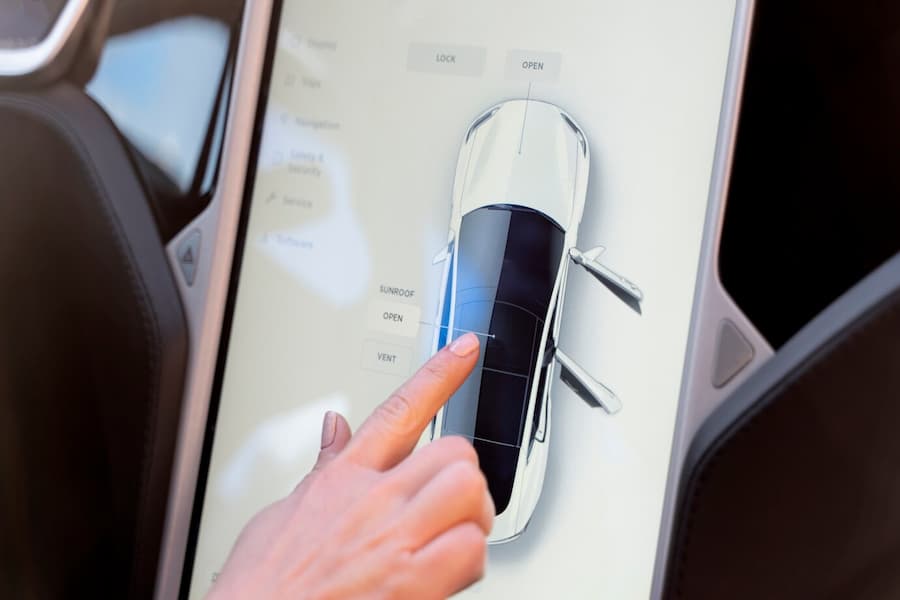
Cybersecurity for automobiles has become a necessity in this modern age of connected automotive. Car companies have recognized this and are taking steps to protect their vehicles from cyber-attacks.
Predictions for Automotive Hacking
Having discussed the current state of automotive hacking, it is time to consider the future of this growing industry. Predictions for automotive hacking are that it will continue to rise in the coming years. By 2023, cyber security experts believe that automotive hacking will be a more frequent occurrence, with hackers able to exploit the computer system of modern cars to gain access to data such as credit card information. As cars become increasingly connected to the internet, they become more vulnerable to cyber attacks. In addition, the addition of self-driving cars and other connected automotive apps such as car rental services will open up new entry points for hackers to exploit.
This will require car manufacturers and cybersecurity experts to stay ahead of malicious code and data packets sent by hackers. Car companies must implement stringent security measures to protect their vehicles from external attacks. This includes protecting engine control and electronics systems, as well as perimeter security and intrusion detection. It is also important to make sure that any software that is installed in a car is approved by the car manufacturer. Combined with other security measures, such as secure telematics systems and USB anti-data hacking charging adaptors, car companies will be able to reduce the incidence of automotive hacks.
Developments in Automotive Cybersecurity
The rise in automotive hacking has sparked an urgent need for advancements in automotive cybersecurity. Automobile manufacturers have begun to recognize the pressing need for security measures to protect from malicious attacks. In response, the automotive industry has taken several steps to strengthen its cybersecurity infrastructure. For example, car manufacturers have implemented key fob systems and other measures to prevent hackers from gaining access to cars and their data. Credit card information is also encrypted to protect against data breaches. Additionally, car companies have developed electronic control systems that limit access to essential engine and automotive components, making it more difficult for hackers to take control of cars.
Moreover, modern cars are increasingly connected to the internet, creating an entry point for hackers to exploit. Firewalls and antivirus programs have been implemented to protect cars from malicious code and data packets. Additionally, sensors have been installed on many cars to detect cyber threats and alert drivers in the event of a breach. Rental car companies have also begun to use software to prevent hackers from accessing the car’s computer system.
Overall, car companies are taking steps to make sure their vehicles are secure. However, much more needs to be done for the automotive industry to reach the level of cybersecurity required for the future of the automotive industry.
Potential Solutions for Automotive Hacking
The future of automotive hacking is as frightening as it is uncertain. As the automotive industry continues to innovate and introduce new technology, it is essential that car manufacturers and industry experts work together to create effective solutions for potential automotive hacks. With the rise in automotive hacking, car companies must take proactive steps to ensure that their vehicles are secure from malicious hackers. This can be done through the use of advanced security measures such as encryption, two-factor authentication, and secure telematics systems.
Furthermore, car companies must also take steps to ensure that their vehicles are protected from the malicious code and data packets that hackers can use to access the car’s computer system. This can be done by making sure that car manufacturers and dealers use software that has been approved by a trusted third-party and that the cars have the latest cyber security measures in place. Additionally, car companies must also ensure that all of the data ports and infotainment systems that are standard amenities in modern cars are protected from intrusions.
Finally, industry experts argue that car companies must also take steps to prevent hackers from attacking the internal systems of their vehicles.
Conclusion
Automotive hacking is a serious security threat that must be addressed. With the increasing prevalence and sophistication of automated software in modern vehicles, the risk of malicious intrusion increases. Automakers must take steps to protect against vulnerabilities in their software and hardware, and consumers must remain vigilant to protect themselves from malicious attacks. Regulatory standards and technological advances such as encryption, firewalls, and intrusion detection systems are helping to mitigate the risk of automotive hacking.
However, automakers must continue to stay ahead of the hackers in order to protect their vehicles from malicious attacks. The future of automotive hacking is uncertain, but with the right tools and strategies, automakers and consumers can work together to ensure a secure driving experience. You can contact 1800 Office Solutions for more information about automotive cybersecurity.










